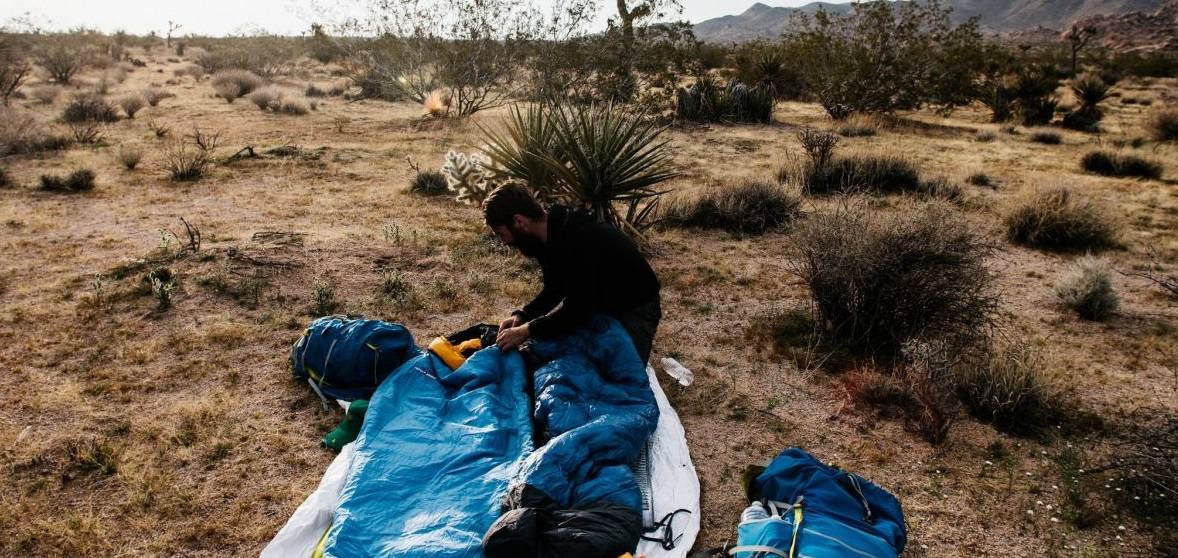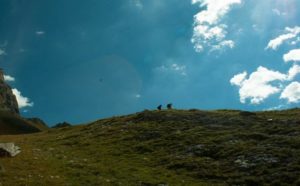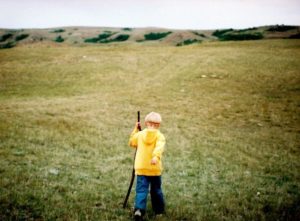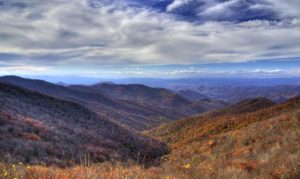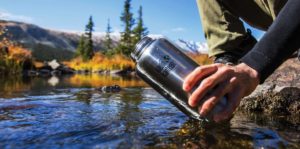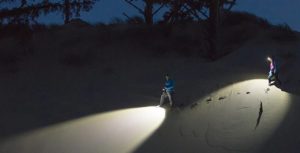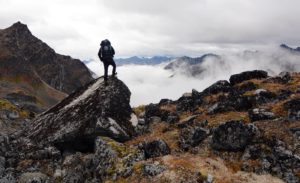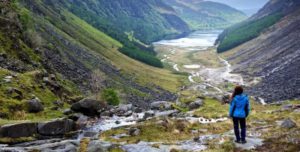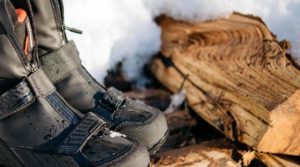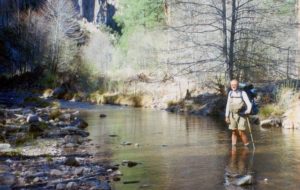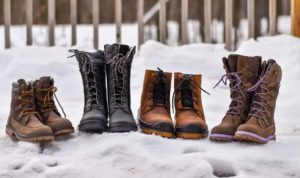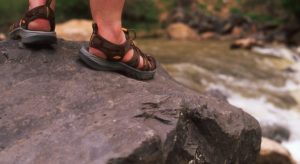What is the best sleeping bag for backpacking? We set out to find out. Our complete review has taken place over several months and on trails across the globe. This review has evaluated over 70 sleeping bags over the years, comparing them in a variety of environments and conditions. The bags were reviewed by avid recreational backpackers, local mountain guides, and National Park Service scientists on extended trips in summer conditions in the backpacking paradise of California’s Sierra Nevada mountains and beyond. Warm nights at middle elevations, early summer season snow, and cold nights above twelve-thousand feet tested the bags on quick mountaineering jaunts.
Western Mountaineering Ultralite
Western Mountaineering is a small California-based company that manufactures high quality down sleeping bags and garments. The sub-2 pound Western Mountaineering UltraLite is a slightly narrower version of the Western Mountaineering Alpinlite, also featured in this review. The UltraLite is lightweight, if not ultra-light, warm and highly compressible. It was the bag of choice for us when spanning multiple elevation zones on one trip and when a few extra ounces paid off for its extra warmth. Where the slim-cut Ultralite lacks in comfort and versatility the Alpinlite takes over. The more spacious Alpinlite is better suited for restless sleepers and for broader shoulders. The wider cut can also accommodate more upper body clothing layers if you use this bag in colder conditions later into the fall. With all Western Mountaineering sleeping bags, you can choose from a few different lengths.
Top Pick for Wet Conditions: Mountain Hardwear HyperLamina Flame
The Mountain Hardwear HyperLamina Flame is a flashy looking new synthetic sleeping bag. Although it is currently the only bag using this insulation type in our newest review, we felt that it deserves attention for being a good bag for those who need the security of staying warm in wet environments. The top zipping design is attention grabbing at first but really wasn’t exceptional in the long run.
Top Pick for Light and Fast Backpacking and Mountaineering: Sea to Summit Spark Sp II
If you’re on a trip where weight and space are your number one priority, a one pound sleeping bag slips easily into the corner of your pack and won’t remind you it’s there until you crawl in for a well deserved good night’s sleep. The Sea to Summit Spark Sp II is a high quality, super light-weight, traditional mummy style sleeping bag. It is smartly styled with lightweight fabrics, 850+ Ultra-Dry Down, and minimal features to keep the weight down. Our testers used this bag mid-summer, on week-long backpacking trips and quick climbing jaunts in the High Sierra at elevations up to 12,000′.
The hood on the Spark SP II fits low on the face and has big gaps for warm air to escape. There is also no draft collar on this sleeping bag.
Credit: Mike Phillips
Best Value: Kelty Cosmic Down 20
The affordable, yet reasonably lightweight and compressible Kelty Cosmic Down 20 takes our best value award. Cold sleepers and backpackers who frequently extend their three-season trips into lower temperatures will want something warmer, but everyone else on a budget should pick up the Cosmic Down 20 and pocket the several hundred dollar savings.
How to Choose the Best Sleeping Bag for Your Needs
Your sleeping bag is the most important insulating layer that is carried on any wilderness excursion. Sleeping bags provide a better warmth-to-weight ratio than anything else in your pack. Investing in a quality sleeping bag that is suited to your needs will help you get a more comfortable night’s sleep, save weight and space in your pack, and keep you warm when the temperatures start to drop. Sleeping bags are also the bed of choice for car campers, travelers, and couch surfers. This review focuses primarily on sleeping bags intended for backpacking. A few of the bags proved to be best suited for car camping, and they tagged along on some road trips throughout our testing too.
Choosing the Right Bag
Our review includes budget-friendly down sleeping bags, lightweight down sleeping bags, and reliable synthetic sleeping bags. We hope to help you decide what is important for you to consider before purchasing a new bag.
One of the first questions to consider is: what type of bag will best fit your needs? We’ve provided a summary of the major types of bags and their advantages/disadvantages below.
Traditional Style Sleeping Bag
This review primarily compares traditional style backpacking sleeping bags with zippers and hoods. These bags prioritize comfort and versatility. After checking nearly 70 models of all types throughout this ongoing review, we’ve found that traditional style bags— like those reviewed here— are a good choice for people that want one bag for all types of outdoor activities.
The bags compared here were chosen to be good candidates for 3 season use; here defined as being ideal mid-summer in cool mountain environments and capable of stretching the season from spring into fall.
Ultralight Sleeping Bags
The average bag in our Ultralight Sleeping Bag Review, which compares hoodless options, weighs only 19 ounces. Models in the ultralight review provide the greatest amount of warmth for the lowest weight. If you’re looking for a lightweight bag that will primarily be used for overnight trips where weight is a concern, we highly encourage you to consider one of the models found in the Ultralight Bag Review. None of these models are currently sold at outdoor stores like REI.
Camping Sleeping Bags
A third type is the large and luxurious rectangular bag that is too heavy to carry backpacking. These offer much more comfort than any model tested here and cost as little as forty dollars!! We compare these general-purpose bags in the Camping Sleeping Bag Review.
Women’s Specific Sleeping Bags
Many manufacturers offer sleeping bags which are specifically designed for females. Often these bags will be smaller and shaped differently to more closely match a woman’s frame. They also redistribute insulation to different areas as women are known to sleep colder than men. We discuss more the merits of buying a women’s specific bag below.
Remember…
Carefully consider the most common application of your sleeping bag. Some bags we consider to be very versatile in where and when you use them. Others are best suited for very specific conditions and trip objectives. If on a budget, don’t skimp on quality, look for a bag that balances warmth, weight, and versatility. If possible, consider a lower priced sleeping bag for car camping/campground camping and a lightweight bag for backpacking/mountaineering.
Insulation Options
The chosen application of the sleeping bag, the environment and season in which you are traveling, your budget and your experience level will help to determine which insulation material is best for your new sleeping bag.
Down
Down sleeping bags have a higher warmth-to-weight ratio, are more compressible, and last longer than their synthetic counterparts. For these reasons, they are generally a better choice for backpacking. A majority of the sleeping bags tested for this review use down insulation. The primary downsides to down bags are that they more expensive and they lose loft when wet, meaning a down bag will not keep you warm if soaked.
Synthetic
Synthetic bags don’t lose loft when wet, so can keep you warm even when wet. They tend to be heavier and bulkier than their down counterparts and it can be difficult to compare synthetic to down bags for that reason. However, they stand out in wet conditions and if you are in a situation where you need one, you will be happy to have the heavier, bulkier synthetic bag. Synthetic bags are suggested for use in very wet environments when a wet sleeping bag is a serious hazard, and for novices who may not have developed the skills or tricks to keep their gear dry.
Taking Care of Your Bag
Proper care is essential for extending the life of your sleeping bag and maintaining its loft and warmth. Keeping your bag dry is imperative for it to function as an insulating layer at all.
How We Choose
We rated each bag on its warmth, weight, packed size, features, and versatility. Our criteria for evaluation for ultralight bags are similar, but with different weighting, so that you can compare performance across reviews.
Warmth
The amount of loft in a bag, measured as the thickness of the insulation between you and the external environment, has the greatest influence on warmth. Fit is the next most important factor in determining warmth. Bags that are too tight or too short won’t allow the insulation to loft properly. Similarly, a bag that’s too large will have drafty dead air spaces that make the bag thermally inefficient even though it may have enough loft for the conditions. The crux in selecting a fixed girth model is choosing one that best fits your body and the clothing you plan to wear. Some bags tested here, such as the Western Mountaineering Highlite and the Sea to Summit Spark Sp II have slim cuts that can’t accommodate lots of clothing or people with broad shoulders.
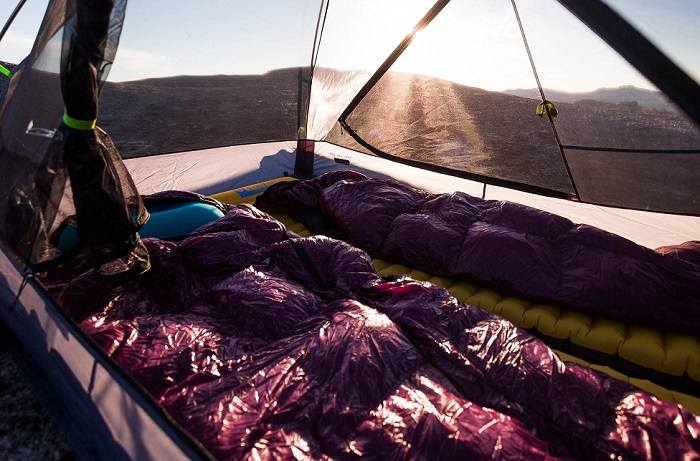
The backpacking sleeping bags that we found to be the warmest were the high quality down bags from Western Mountaineering, the Alpinlite, and the Ultralite. Both of these bags have 850+ fill power down and plenty of it, 19 and 16 ounces respectively. (The Alpinlite is roomier than the Ultralite, which accounts for the extra insulation.) Both also have draft collars to keep warm air inside the sleeping bag where it belongs. The least warm bag, the lightweight Western Mountaineering Highlite, has only 8 ounces of down and no draft collar. The thinner insulation offers less protection from the elements and the lack of a draft tube allows more cold air inside the bag, leaving the sleeper less toasty than in the other bags.
Weight
Weight is a function of fill material and amount, shell material, and features. In general, heavier bags use either synthetic insulation or low fill-power down (500-700). Many of the highest performance bags reviewed here use the best down (850-900 fill-power) and very lightweight, expensive fabrics. However, the primary factor that makes one bag lighter than another is its cut, as described above, and its features, or lack thereof.
The 50-ounce The North Face Furnace is the heaviest down bag tested here at 50 ounces. This exceeds the weight of our lone tested synthetic insulated bag and barely makes the cut to be considered a backpacking sleeping bag in our eyes. The synthetic Mountain Hardwear Flame weighs 43 ounces. Note that all the other bags in this category come in at under three pounds. Heavier bags, which are more comfortable but not suitable for backpacking, are found in the Camping Sleeping Bag Review.
At a touch over 16 ounces, the minimal Western Mountaineering Highlite is the lightest down bag we tested. In a close contest, the Sea to Summit Spark Sp II weighs 18 ounces in a size Long and scored better overall than the Highlite. The Marmot Plasma 30 is also a top scorer for weight. We would rather carry and use the slightly heavier but more comfortable Spark. Although a one pound bag is impressive to look at and a pleasure to carry, we’ve found that adding several more ounces of down greatly increases warmth, which, in turn, increases versatility.
For lightweight summer backpacking use, where bags around one pound are primarily used, we prefer a lightweight hoodless bag, like those found in the ultralight sleeping bag category. However, if you prefer a traditional style (zipper, hood etc.) and want to save weight, these bags are excellent for light and fast trips into the mountains where weight and space matter.
Comfort
Comfort inside of a bag is highly subjective and primarily depends on fit. Increasing the size of the bag provides more space to sprawl about and move within a bag. Take for example the Western Mountaineering Alpinlite and the Western Mountaineering Ultralite, which we compared side-by-side. These bags are almost the same except that the Alpinlite has a wider cut. The wider cut of the Alpinlite is indeed more comfortable. The Sierra Designs Backcountry Bed addresses a long-term comfort concern for stomach sleepers looking for a three season sleeping bag by combining attributes of a traditional style mummy bag with the freedom of movement of a quilt, like those found in the Ultralight Sleeping Bag category.
In addition to space for sprawling and thrashing, our ratings here focus on a bag’s features that contribute to or detract from comfort. In this regard, we’ve found that the hood and neck baffle design are most important. We rated the Western Mountaineering Alpinlite and Ultralight much higher than the Highlite largely because they have neck baffles and the Highlite does not.
Insulation type influences comfort; sleeping in a down bag is like floating on a superlight cloud while zipping into a synthetic bag is less heavenly.
Features
In most cases, more features or more complicated features reduce performance. They add weight, complexity, cost, and might fail faster. The potential benefit a given feature has on warmth, comfort, or convenience is rarely offset by its drawbacks.
Versatility
We find that lightweight bags are the most versatile. The Sierra Designs Backcountry Bed has no zipper to roll onto and incorporates a quilt that enables you to sleep more like you would with a comforter at home. The quilt can be tucked into the bag when temperatures near the bag’s comfort limit and is left outside the bag for warm nights and sleeping on your stomach.
Packed Size
Packed size is a function of down fill power, fabrics, and features. Higher quality down, light fabrics, and simple features create the most compressible bags. Of the models compared here, we found The North Face Furnace to be least compressible and the Sea to Summit Spark and Western Mountaineering HighLite to be the most compressible.
Important Accessories
A waterproof stuff sack is critical for keeping your bag dry. Most bags come with awful stuff sacks. Thus, we highly recommend purchasing one separately.
Buying Advice
For the weight conscious adventurer, choosing the best bag is arguably the second best way (after a tent) to the reduced weight of a kit. This article describes the construction, discusses the numerous types available, and shares some tips and tricks that our testers have learned from testing dozens of products over many years.
Types of Insulation
High-performance bags are made with synthetic or down insulation.
Synthetic insulation is best for extended trips in wet conditions where you expect the bag to get wet and where opportunities to dry the bag out are limited. These synthetic materials are heavier, less compressible, and often less comfortable than down products.
Down insulation offers significantly more warmth for its weight, is more compressible, more comfortable, and more durable than synthetic insulation. Its Achilles heel, however, is moisture: down bags are not suitable for conditions where the bag may get soaking wet. Down’s insulation value, the amount of loft, decreases when it collects moisture. It’s important to prevent a down bag from getting wet and, on multi-week trips, to have an opportunity to dry the bag out if it becomes soaked. However, for most conditions in most places, down insulation offers the greatest performance for multi-day trips where weight and packed size are top concern.
Mammut has a good report on the history of bag warmth and testing procedures, see it here.
Down
Down insulation comes from tiny particles of a bird’s plumage that lie under its feathers. Although other cold weather birds produce down, Goose down has been shown to be the highest quality available. Down quality is measured by its fill power, the number of cubic inches displaced by one ounce of down. A bag with 900-fill power will be lighter, more compressible, and more durable than an identical and equally warm bag with a lower fill power, such as 650. The more volume displaced by higher fill powers requires less total down to fill the same volume.
Samples of the same weight show that increasing down fill power displaces more volume, resulting in a lighter and more compressible product. 900-fill power is the best available.
Synthetic Insulation
Synthetic insulation mimics down fibers. The synthetic (plastic) fibers are spun into somewhat lofty material that fill baffles in the bag to provide insulation. Synthetic fibers are less compressible, heavier, and less durable than their down counterparts. They are, however, more hydrophobic (waterproof), warmer when wet, less expensive, and easier to care for in the long term.
You should go with synthetic insulation for very wet conditions or trips with a moderate to high probability of getting a bag soaking wet. Synthetic insulation is good for expedition mountaineering trips that cross multiple climates. It’s the only bag suitable for big wall rock climbing and “if it gets wet you could die” circumstances. Some major outdoor education programs use synthetic bags because they will keep unskilled students warm on extended trips if the bag gets wet.
Fabrics
Unlike insulated jackets, sleeping bags are rarely exposed to abrasive conditions that might tear a fabric. Thus, quality backpacking bags use very lightweight fabrics. Some ripstop fabrics, used on the exterior, weigh as little as 0.8oz per square yard. All of our top-rated bags use very similar, if not the same fabrics. In general, lower-priced bags use heavier fabrics. Lightweight fabrics are very comfortable.
We’ve found that waterproof/breathable fabrics are unnecessary on a backpacking bag in “three-season” conditions. The exception here is at the bag’s foot box. We like how Nemo uses a waterproof/breathable fabric on the bottom of its bags, which helps to prevent the insulation from absorbing condensation from the foot of your tent. In general, waterproof/breathable fabrics are best reserved for winter bags where there is significantly more condensation inside of a shelter and keeping insulation dry at all costs is a safety concern.
Wearable Bags
Weight wise, jackets are not very efficient for warming. Sleeping bags are much more thermally efficient for their weight. Thus, some companies offer wearable models that eliminate the need to bring a jacket. Wearable bags offer budget and weight conscious backpackers a viable option for saving weight, but they are not as warm or as comfortable as either a dedicated jacket or dedicated bag for sleeping.
The Anatomy of a Sleeping Bag
Baffle Construction
Down bags have baffles, or channels, that hold down in place. There are three types: continuous baffles (which allow you to move down from the top to bottom of bag), vertical baffles (which allow you to move down from the head to the foot), and side block baffles (which keep the down in place for maximum heat retention). We believe that continuous baffles are the most versatile and side-block the warmest.
Foot Box
Since your feet take up more room than your shins do, many bags are designed with flared or trapezoidal foot boxes. Some mountaineering bags have extra space to accommodate boot liners or water bottles.
Zippers
Thoroughly examine a bag’s zipper. The zipper’s teeth should be large enough to run smoothly without catching on the fabric. Most bags have a reinforced strip along the inside edge to prevent snagging and eventually tearing the interior fabric. We especially like the tape-stiffened fabric around the zippers on Western Mountaineering models. Some bags, such as the Montbell U.L. Super Spiral Down Hugger, can be zipped to another bag for a larger and perhaps more interesting sleeping experience. Also, make sure the fabric and seams have good integrity. Tug at the seams to make sure they don’t open up. The bag’s overall construction, features, and finish will determine its quality.
Draft Tube
Almost all bags have an insulated tube or flap that runs parallel to the zipper in order to reduce heat loss. Cold weather bags may have two heavily filled draft tubes. The tube(s) should be sewn only to the inner liner material, not all the way through since that creates holes and air leaks. Draft tubes are often sewn to the top zipper so that they hang down when you sleep. Make sure that the tube is sufficiently large to cover the entire zipper area. Those that are too small can interfere with the zipper, so examine the zipper action before you buy.
Pockets
Some bags have stash pockets. These are generally more for fashion than function, but perhaps you might use one for a watch alarm. We think internal pockets are better than external pockets because you can access them without opening up your bag and an alarm will be more likely to wake you up. In our experience, it is tough to hear an alarm through the insulation…but maybe your hearing is better than ours.
Shell Material
Several of the zero degrees down bags we’ve tested have waterproof/breathable shell materials. These resist frost, spindrift, and snow, and keep the bag much drier on multi-day trips. We only recommend a waterproof shell for camping on snow and ice. For backpacking specific bags, look for lightweight materials that are comfortable to the touch.
Note for 2019: We updated our existing review to include new models and styles and compare them to previous winners. Sleeping bags that have been discontinued by manufacturers are no longer included to make room for the latest and greatest. This review describes our product selection and criteria for evaluation and also identifies the best performing bags across this broad category.

